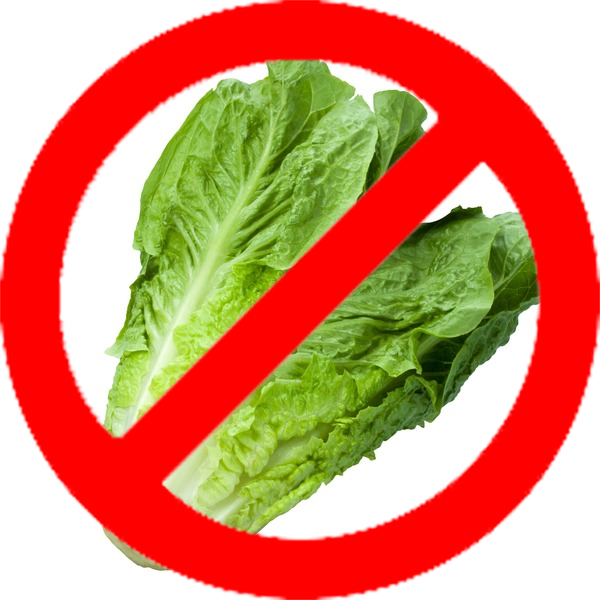During this global pandemic, the U.S. Equal Employment Opportunity Commission (EEOC) green-lighted employers to take temperatures checks of employees and to administer COVID-19 testing for workers prior to returning to work without running afoul of the Americans with Disabilities Act (ADA). This appears straight-forward upon first reading, however, several practical uncertainties about implementation, including confidentiality, discrimination, and how long to retain records remain.
As such, deciding whether to take temperatures and/or require COVID- 19 testing as a return to work strategy is more complicated than it may seem.
Temperature Screening & Testing Considerations
Temperature screening and COVID-19 mandatory testing are both permitted medical examinations during this pandemic but are otherwise prohibited during non-pandemic times. Before adopting, employers should understand the requirements impacting the records these tests generate, including the need to protect confidentiality and to retain records for longer than one may expect.
Temperature Screens
Under normal circumstances, temperature checks are considered a prohibited medical examination under the ADA. During a pandemic, however, the Equal Employment Opportunity Commission (“EEOC”) makes an exception, allowing employers to take temperatures/use temperature checks and exclude employees from the workplace should temperatures exceed public health recommendations. If employers keep records of temperatures, they must retain these records per applicable regulations. This is important because an “employee medical record” would likely result if employers take employees’ temperatures or collect temperature related records. As we will see below, there are regulatory requirements that require how we conduct these screens, and where and for how long we must retain them.
COVID-19 Testing
COVID-19 testing also constitutes a permissible medical exam under ADA during this pandemic, per the EEOC-issued guidance regarding mandatory employee testing.
For medical examinations to be allowed under the ADA, the test must be “job related and consistent with business necessity,” and employers must treat information as a confidential medical exam.
The initial guidance acknowledged that the spread of COVID-19 is a “direct threat,” hence meeting the requirement that a medical exam be “job related and consistent with business necessity” and that temperature screenings were therefore appropriate. For the same reasons, in updated guidance released at the end of April 2020, the EEOC expanded that guidance to clarify that employers may choose to administer COVID-19 testing to employees before they enter the workplace to determine if they have the virus for the same reasons.
When reading the EEOC’s language closely, the permission granted by EEOC appears to be for diagnostic tests, as the guidance states testing is to determine if employees have the virus before allowing employees to return to work. It is unclear whether antibody testing is included in the above analysis because antibody tests do not determine if someone is currently infected.
In addition, there are other considerations employers should assess before adopting a testing protocol. EEOC reminds employers that they must review the accuracy and efficacy of the selected test per FDA and CDC recommendations. Moreover, pragmatic considerations, such as how to maintain social distancing and employee privacy, determining who will perform the testing and at what the frequency, not to mention evaluating whether there is enough test capacity to perform employee-wide testing at a meaningful cadence should be evaluated.
Records Management & Retention
There is another often over-looked question: What do employers do with documented test records? This question applies whether the employer conducts the test, requires tests from employee’s healthcare providers to be off work to self-isolate, or as a return to work requirement.
It was clearly outlined above that temperature records and COVID-19 test records constitute employee medical records. Why is this important? Because there are specific requirements relating to employee medical records, including what appears to be a surprisingly long retention requirement.
Where to retain: An employer should store all medical information related to COVID-19 in existing medical files, separate from the employee’s personnel file, per the ADA, limiting access to this employee confidential information. This includes an employee’s statement that he has COVID-19 or suspects he/she has the disease, or the employer’s notes or other documentation from questioning an employee about symptoms.
How long to retain: That is the 30-year question. The Department of Labor’s Occupational Safety and Health Agency (OSHA) provides retention requirements for employee medical records in certain situations for a period of an employee’s employment plus 30 years.
While COVID-19 test results and temperature screening documentation are deemed medical examinations under the applicable regulations, are the documented results deemed medical records? We turn to applicable EEOC OSHA regulations in section 1910.1020 for answers.
OSHA Requirements
The OSHA general duty clause, section 5(a)(1) requires employers to furnish to each of its employees a workplace free from recognized hazards that are causing or likely to cause death or serious physical harm. COVID-19 appears to rise to this threat level. But is that fact alone dispositive to falling under the applicable OSHA retention requirements?
OSHA regulation section 1910.1020 requires employers to retain employee exposure or employee medical records relating to employee exposure to certain hazards. This section applies to each general industry, maritime and construction employer who makes, maintains, contracts for, or has access to employee exposure or medical records, or analyses thereof, pertaining to employees exposed to toxic substances or harmful physical agents (Emphasis added).
Is SARS-CoV-2, the virus that causes COVID-19, considered a “toxic substance or harmful physical agent?”
Most would quickly assume the answer is ‘yes’. But it may not be as clear as the black and white letter of the law would hope. Let’s review some key definitions in the applicable regulation to help shed more light on this question.
What are Toxic Substances or Harmful Physical Agents?
The record retention requirement pivots on the last phrase of 1910.1020, that is “…pertaining to employees exposed to toxic substances or harmful physical agents.”
Toxic substances or harmful physical agents are defined as follows;
- 1910.1020(c)(13) “Toxic substance or harmful physical agent” means any chemical substance, biological agent (bacteria, virus, fungus, etc.), or physical stress (noise, heat, cold, vibration, repetitive motion, ionizing and non-ionizing radiation, hypo – or hyperbaric pressure, etc.) which:
- 1910.1020(c)(13)(i) is listed in the latest printed edition of the National Institute for Occupational Safety and Health (NIOSH) Registry of Toxic Effects of Chemical Substances (RTECS) which is incorporated by reference as specified in Sec. 1910.6; or
- 1910.1020(c)(13)(ii) has yielded positive evidence of an acute or chronic health hazard in testing conducted by, or known to, the employer; or
- 1910.1020(c)(13)(iii) is the subject of a material safety data sheet kept by or known to the employer indicating that the material may pose a hazard to human health. (Emphasis added by author).
The use of “or” clarifies that only one of the criteria need to be met. Based on the above, while subsections (c)(13)(i) and (c)(13)(iii) do not appear relevant, subsection (c)(13)(ii) appears to apply as SARS-CoV-2 has shown to result in acute health hazard, resulting in the disease COVID-19. Whether there is a chronic health impact remains to be seen given the novelty of this virus. That said, acute health impact appears sufficient to determine SARS-CoV-2 as a “toxic substance or harmful physical agent” for purposes of this analysis.
This alone doesn’t automatically place an employer in a 30-plus year requirement to retain employee medical records. What constitutes an “employee medical record” and “employee exposure record” for purposes of this regulation must be further understood before determining appropriate retention.
What are Employee Medical Records and Employee Exposure Records?
“Employee medical records” are defined in section 1910.1020(c)(6), and means a record concerning the health status of an employee that is made or maintained by a physician, nurse or other healthcare personnel, or technician, including: Medical and employment questionnaires or histories, the results of medical exams, lab test results, medical opinions/doctor’s recommendations, first aid records, employee medical complaints, and descriptions of treatment or prescriptions.
Section 1910.1020(d)(1)(i) goes on to specifically prescribes a minimum of a 30-plus year retention period as follows: “The medical record for each employee shall be preserved and maintained for at least the duration of employment plus thirty (30) years.”
“Employee exposure records,” are defined in subsection 1910.1020(d)(1)(ii), as: “Each employee exposure record shall be preserved and maintained for at least thirty (30) years,…”. Some exceptions are listed in this subsection for records relating to health insurance claims, first aid records and records relating to employees working less than one year.
What Constitutes Employee Exposure?
One must also look at what “employee exposure” means in light of this regulatory requirement to determine applicability of the 30-plus year retention.
1910.1020(c)(8) defines “exposure” or “exposed” to mean that an employee is subjected to a toxic substance or harmful physical agent in the course of employment through any route of entry (inhalation, ingestion, skin contact or absorption, etc.), and includes past exposure and potential (e.g., accidental or possible) exposure, but does not include situations where the employer can demonstrate that the toxic substance or harmful physical agent is not used, handled, stored, generated, or present in the workplace in any manner different from typical non-occupational situations.
More Questions than Answers
This analysis may leave more questions than answers, as several questions remain after looking closely at the regulatory requirements. For example:
- How can an employee prove that exposure to SARS-CoV-2 occurred in the course of employment?
- Does the employee even have to? The regulation clearly states that it is the employer’s burden, in that the “employer demonstrate that a toxic substance or harmful physical agent was not present in the workplace in any manner different from typical, non-occupational situations”.
- How can an “employer demonstrate” that the harmful physical agent was not present? In other words, how can employers demonstrate that its employees are at any greater exposure by coming to work than they are in their every day lives, like going to the grocery store?
- How do employers prove absence? Is it even possible given several people are asymptomatic?
- Does this analysis differ by food industry sectors? What about meat and poultry processors with known high rates of infection in their workplace? Would the analysis differ?
Conclusion
Short of additional guidance issued by Department of Labor’s OSHA, ultimately this will likely be decided by the courts when the first lawsuit on this topic arises, known as decision via case law. What do employers do in the interim while these shades of gray are not yet adjudicated? It is recommended to err on the side of caution. Find ways to adjust your company’s record retention procedures and systems to be able to accurately retain these records for the duration of your employee’s employment plus 30 years.
Resources
- OSHA Laws & Regulations. OSH Act of 1970. SEC 5. Duties. Retrieved from https://www.osha.gov/laws-regs/oshact/section5-duties
- OSHA Standards. Part 1910, Standard 1910.1020. Retrieved from https://www.osha.gov/laws-regs/regulations/standardnumber/1910/1910.1020
- OSHA. Access to Medical and Exposure Records. (2001). U.S. Department of Labor, OSHA. Retrieved from https://www.osha.gov/Publications/pub3110text.html
- U.S. Equal Employment Opportunity Commission. “What You Should Know About COVID-19 and the ADA, the Rehabilitation Act, and Other EEO Laws”. (Updated May 7, 2020). Retrieved from https://www.eeoc.gov/wysk/what-you-should-know-about-covid-19-and-ada-rehabilitation-act-and-other-eeo-laws. See A. 6 and B.1.




















